#Kambli blanket
Explore tagged Tumblr posts
Text
Embrace Warmth and Tradition with an Authentic Woolen Blanket

An original woolen blanket is more than just a method to remain warm; it's a piece of history, and I've uncovered the essence of these cultural treasures at Ghongadi store.
The Maharashtra Heart
These blankets, woven with 100% real wool and coloured with organic colours, have become a staple in Maharashtra families. They're created on Pit-Looms, a tribute to time-honored practices that are still alive and well.
Cultural Importance
These blankets are treasured in Maharashtra. They are utilized in rituals, weddings, and community gatherings. The black Ghongadi is used for beds, whereas the white one is a treasured blanket.
Exploration Opportunities
I discovered a wide variety of real woolen blankets at Ghongadi store. Each piece is a work of art, from bed size Ghongadi to traditional Ghongadi, Kambali Ghongadi to Kolhapuri Ghongadi. Its rough roughness adds to its allure.
Beyond the Heat: Health Advantages
These blankets are useful for more than just keeping warm. They are said to prevent blood clotting, assist with acupressure, promote better sleep, help manage body temperature, and give pain relief.
Investing in Local Artists
What makes these blankets even more unique is that they are created by the expert Dhangar community, traditional Maharashtra sheep rearers. Your purchase immediately contributes to their subsistence.
Finally, a genuine woolen blanket is more than simply a blanket; it is a piece of culture, tradition, and history. It's a nice and cosy way to remain warm while helping the craftsmen that keep these traditions alive. Explore the diversity, enjoy the culture, and warm yourself with an actual woolen blanket.
0 notes
Text
The History And Cultural Significance Of Kuri Unne Kambali Blankets

Kambali blankets are a type of blanket that is traditionally used in India. These blankets have a rich history and cultural significance that spans back hundreds of years. In this blog, we will explore the origins and traditional uses of Kambali blankets in various Indian cultures.
1. History of Kambali Blankets:
The word “Kambali” comes from the Persian word “Qambal,” which means blanket. Historians and scholars are of the opinion that during the civilizations of ancient Egypt, Babylonia, and Mesopotamia, woolen products were used by the people as blankets and druggets. Among all others, Persians were said to be the first to weave and use woolen products in the world. Since sheep rearing is one of the ancient occupations of India. Wool weaving has also been an important household occupation in the states like Jammu and Kashmiri, Rajasthan, Andra Pradesh, Karnataka, Maharashtra, and Tamil Nadu. The Ain-I-Akabari mentions that Emperor Akbar was an ardent admirer of Kashmir woolen shawls. By the third quarter of the 18Th century, Kashmir shawls had become synonymous with fine woolen wear in India and were famous in all the fashionable circles of the west, and trade was well established with China, Afghanistan, Turkey, etc. Products made out of sheep wool were mainly classified as Blankets, Druggets, Carpets, and Shawls. We can find references to the use of ‘Kambalis’ in the ages of Ramayana, Mahabharata, and Sri Revansiddeswara Purana. Historical references reveal that the nomads from central Asia were the first to rear sheep and weave Kambli out of the wool procured from these sheep. These nomads carried this occupation to the European countries including India, during later periods, Kambli Nagideva, sharing of 12 century A. D., in Karnataka during the period of Sri Basaveshwara was said to be the weaver of kambali.
The Kambali blankets were known for their soft texture and durability, making them a popular choice for everyday use. The production of Kambali blankets was an important industry in India, and it was a way for families to earn a living.
2. Traditional Uses of Kambali Blankets:
Kambali blankets have been used for a variety of purposes in Indian culture. One of the most common traditional uses is bedding. They are soft, warm, and comfortable, making them a great choice for a good night’s sleep. They were also used as a cover for sleeping or resting during the day, and even as a play mat for children.
In addition to being used as bedding, Kambali blankets were also used as a wrap or shawl. They were draped over the shoulders to keep warm during colder weather, and could also be used to carry babies or other items.
Another traditional use of Kambali blankets was in religious ceremonies. The blankets were often used as a cover for altars, or as a covering for holy objects. They were also used as a gift or offering in religious festivals or events.
3. Cultural Significance of Kambali Blankets:
Kambali blankets have significant cultural and religious significance in many Indian cultures. For example, in Hinduism, Kambali blankets are used in many religious ceremonies and rituals. They are considered to be sacred and are often used to cover statues of deities or to cover the floor of a temple.
Kambali blankets also have cultural significance in the lives of many Indian people. They are often passed down from generation to generation and are considered to be valuable family heirlooms. The blankets are seen as a symbol of tradition and represent the deep roots and history of Indian culture.
In addition to their cultural significance, Kambali blankets also have social and economic significance. The production of Kambali blankets has been an important industry in India for hundreds of years, providing a source of income for many families. The blankets are often made by hand, using traditional techniques and materials, and the production process is seen as a way to preserve and promote traditional Indian arts and crafts.
4. The Future of Kambali Blankets:
While Kambali blankets have a long and rich history in Indian culture, their use and popularity have increased in recent years. Many people now opt for traditional and pure woolen rugs for bedding and clothing, and the production of Kambali blankets has increased significantly.
However, people Love and appreciate the beauty and cultural significance of Kambali blankets, and efforts are being made to preserve and promote the production of these blankets. Many artisans and craftsmen are now producing Kambali blankets using traditional techniques, and there is a growing interest in these blankets both in India and around the world.
In conclusion, Kambali blankets have a long and rich history in Indian culture. They have been used for centuries for a variety of purposes, and have significant cultural, religious, and social significance. While the popularity of Kambali rugs still exists and has a great business in the different parts of Indian states. You can buy these blankets online.
1 note
·
View note
Text
Everything You Need know About Ghongadi
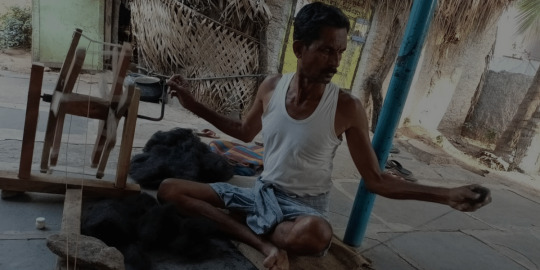
These Ghongadi blanket, which is a symbol of the cultural and religious glory of Maharashtra, has a place in the Deoghar and earlier the late actor Dada Kondke had outlined the importance of the blanket in the social life of the time in the film song "Kathi no Ghongdan Ghevu Diya Kiran Mala B Jatra Yevu Diya Ki". The heat is disappearing. Kaalbhor blanket, which everyone wants, i On the shoulders of Panduranga of Pandhari, on the shoulders of Lord Krishna, on the shoulders of Dattaprabhu, on the shoulders of Navnath, on the shoulders of Khandoba, Kheloba, Biroba, Siddhanath, Mahalingaraya, Vitthal Birdeva, there are also blankets on the shoulders of two reghi, two and a half reghi, three reghi, three and a half reghi in the Gurushishya tradition of Dhangar tribe. It is found that the most sacred place is the blanket and the natural identity of the Dhangar tribe is created from the blanket.s famous as Kambli, Kambla, and the flag of this Kambli is used in the Dhangar community. Blanket expert Sachin Shelke has informed that the history of blanket making is ancient and there is a reference to this blanket from Mahabharata. Those who know about blankets always use blankets but some people buy blankets thinking of using blankets for different reasons. Blankets are made from two colors of wool, black and white, and blankets are graded and khali blankets are used for sleeping. The shepherds who keep the wild sheep in the Yakho always use blankets to protect them from the wind and rain. As natural heat is available in everyone's house.
Jawal blanket:-
The wool obtained from the first shearing of a sheep lamb is called Jawal. The blankets made from this Jawal are called Jawal blankets. There are two or three types of Jawal blankets. The most finely woven blanket is soft and does not pierce the body. The cost is higher as more effort is required. Similarly, blankets are made from medium and thick wool yarn. These three types of blankets are used by people to cover themselves. At present, the work of making these blankets on handlooms is done in sporadic places in Mhaswad in Mandesh and Chitradurg in Karnataka, Konkan belt. Since Jawla wool is limited, blankets are also limited. Jawla blankets are expensive, so they are cheap, so don't be deceived by buying soft and cheap Panipat blankets under the name of Jawla. A traditional blanket of two and a half thousand can save you lakhs of rupees.
Khali Ghondi
A reduction in chinchocca fur while making blankets
The most widely used blanket made from chinchilla is called khali blanket. This blanket is hard like starch cloth. Khali blanket is made from black, white and black and white combined wool. This blanket is used for sleeping. This blanket is prepared by soaking in salt water.
Both the above types of blankets are made by weaving on handlooms in the traditional way.
Machine Made Blanket.
A blanket is made by making a yarn of woolen yarn and mixing it with other yarns. This blanket is heavy. People feel the problem of wool when using traditional blankets, so they use cheap machine made blankets available in the market. It contains 60% wool and 40% other yarns. This blanket is made of black or black. Dyes are given to make it white. Over time these blankets show their original form.
Panipat blanket
In many films and religious TV channels, Maharaja who narrates the story of Ramayana has a blanket on his shoulder. It is a soft blanket called Panipat Shawl. In Panipat in the state of Haryana, shawls that look exactly like blankets are produced on a large scale, and thousands of people mistake them for blankets and buy these shawls. A woolen blanket is coarse and soft as well as warm. The blanket is washable and does not get damaged by soil and mud. Using the blanket in any season provides physical benefits.
Mahatma Gandhi made khadi a nation by giving the slogan of Swadeshi, but no one tried to make the blanket made from woolen yarn on the khadi-making wheel itself. Mahatma Phule had a blanket on his shoulders while facing the Hunter Commission This blanket caught the attention of the British. Meanwhile, the handloom blankets produced in Belgaum were sent to Britain by the British. Even in the history of the Marathas, when going on big missions, everyone used to have a blanket, this blanket is disappearing during the mechanization period. As the blankets and the blanket weavers' hard work is not getting due respect, the blankets which represent the glory of Indian culture are getting stuck and there is a need to restore the glory of this blanket once again.
–By Ghongadi
1 note
·
View note
Link
Best Budget Winter Mink Blanket #2021 #review #bestblanket #Blanket #blanketdoublebed #blanketforwinter #blanketprice #blanketreview #blanketunboxing #blanketwashingathome #blanketwholesalemarket #BUDGET #kambal #microfiberblanket #Mink #minkblanket #only100percent #Review #Winter
0 notes
Text
FVD - Week 6

I love these banners and creating them as well. These started off as an accident and I had to continue throughout. Now, you might be asking that why a design student of the 21st century using fonts and colours that were used in 60s, 70s or 80s. Well, what to say. I love me some retro. I wanted to have that splash of yesteryear in my blog atleast for the FVD module.
Ok now enough about the banners. We are here. We crossed everything, every hurdle, every internet connection issues, all the sleepless nights and everything to final stage of the Fundamentals to Visual Design Module.
And someone told me Masters would be chill. They cannot be more wrong. But they were wrong about one more thing as well. No one mentioned to me about Masters being so much of fun iterating, discussing, doing and re-doing and trying out new avenues and finding a bit about yourself every single day. Thank you NID for that.
So, final week was very very exciting and hectic. Starting off with colour compositions and then the final assignment which was with a huge group of 9 people. Yes, 9. Late night classes, Meetings from one morning till next morning. Hundreds of zoom meeting links and hours and hours of explorations, failures and what not.
The first assignment of Week 6 was to create compositions in colour with basic shapes, lines and dots. Let me tell you the brief:
Take two 20cm X 20cm squares. Using any two geometric shapes (circle, triangle, square, rectangle or rhombus), lines and dots (size and colour is decided by you) create two compositions that represents any of the following words~ love, fear, hate, friendship, sweet, bitter, sour, vast, future, past, many, shallow, flight, infinite. Make a window of 8cmX8cm, identify the predominating gestalt laws and the principles of design from your compositions. Take photograph of those 8cm X8cm squares.
I decided to go with Fear and Future as my keywords. They were randomly picked up by me actually. But I wanted to take a different kind of approach to this assignment. How about create a very short narration and base my keywords on that and create a colour palette accordingly. Sounds fun, right? Let me walk you through my explorations and thumbnails.
Fear Exploration -1
Narration:
“32457…..123 , is this the right one? No.”
You check the number again. You are surprised that the thing that you have anticipated all this while might just become true today. The anxiety runs within you making. You try not to get alarmed. You see a frightened expression on your screen
You end up clicking on submit and the loading animation starts. You hold your breath. This is 12th boards, not a child’s play.
Keywords and colour Palettes:

Associated Elements:
Triangles, Circles, Lines

Fear Exploration-1
_______________________________________________________________________
Fear Exploration 2
Narration:
You turn around and see that the place is entirely new. Did I take the right turn or left?
Anxiety grips you in it’s arms. You are alarmed with every movement around you. You start striding excitedly. You can sense people staring at you, few in a surprising way and some with an alarmed look on their face.
‘Oh, but there is Google Maps, right?’ you think to yourself. You take out your phone and well you have no internet!
Keywords and colour Palettes:

Associated Elements:
Triangles, Rectangles, Lines

Fear Exploration-2
_______________________________________________________________________
Fear Exploration -3
Narration:
Something is about to get you. You turn around and see no one but you do feel some presence. You hurriedly climb down the stairs humming to yourself because apparently humming helps us relax. But as soon you grab the bottle of water, you go into flight mode and run up the stairs without looking behind.You reach your bed, gulp a few sips of water and jump into your blanket and mumble, “No more horror movies after 10 next time!”
Keywords and Colour Palettes:

Associated Elements:
Triangles, Lines (Wavy)
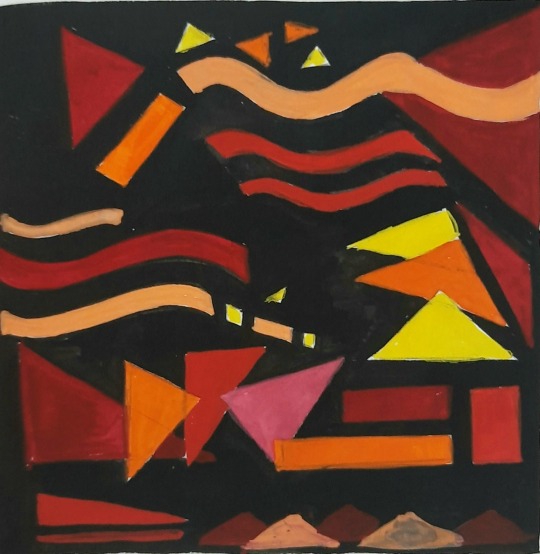
Fear Exploration -3
_______________________________________________________________________
Future Exploration 1
Narration:
It has been almost one year since the world has been in a total chaos. There is this cloud of uncertainty which lingers above. Ambiguous predictions are being delivered.
There has been a few developments here and there and one could feel that silver lining of hope.
The end result is limitless.
Keywords and Colour Palettes:

Associated Elements:
Circles, Rectangles, Lines, Dots

Future Exploration -1
_______________________________________________________________________
Future Exploration -2
Narration:
Unlimited possibilities, both good and bad. The world is moving at a faster pace than ever but most of the ways are same. There are new avenues opening up here and there with innovations and changes in policies. Although robots have taken over, there is a small portion of humans who still take care of few of the major decisions.
Although, the rule of the robots have gotten the world into a monotonous state.
Keywords and Colour Palettes:

Associated Elements:
Circles, Rectangles, Lines, Dots
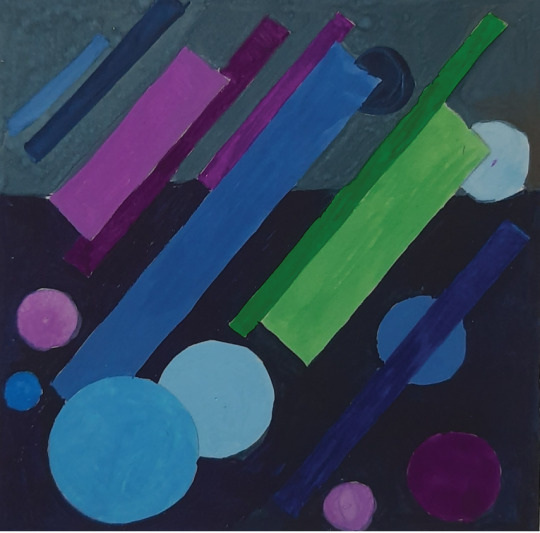
Future Exploration -2
_______________________________________________________________________
Final Compositions:
Fear:

Final Composition- Fear
Principles from 8cm x 8cm window:
Rhythm \ Point of Interest-
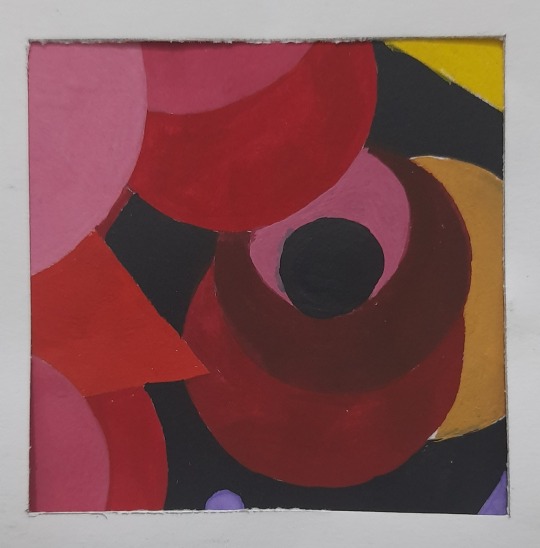
Point of Interest:
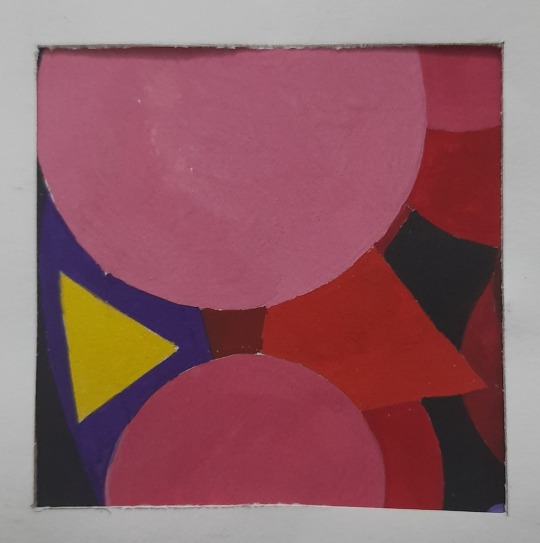
Harmony-
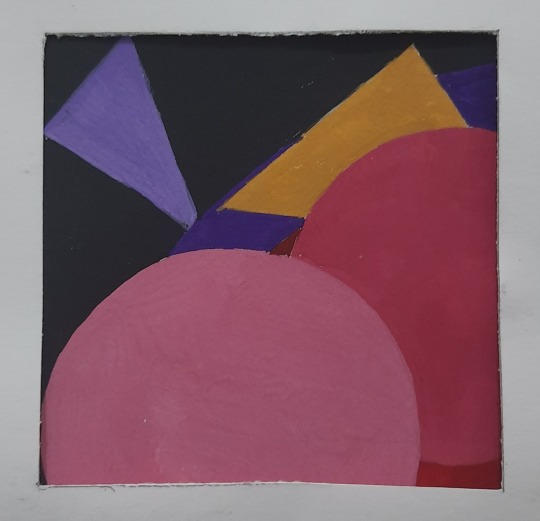
_______________________________________________________________________
Future:

Future Final Composition
Principles from 8cm x 8cm window:
Harmony-

Rhythm (Colour)-

Point of Interest-

_______________________________________________________________________
Ok now on to the final assignment. This was very a very intense 3 days with little or no sleep for all us and I understood what it is to be awake for 72 hours at a stretch. Getting the idea finalised, working on the visuals, coordinating with the entire team seated around in different parts of India, it was a whole journey in itself.
The brief:
You will work in a group of 8 (plus minus 1/2).
You will need to create a narrative (5 minutes video). The narrative has to be about transition; it could be colour transition, for an example from Spring to the Winter. Or could be a transition between the design principles, like Rhythm-harmony-point of interest. Like mentioned in case of colour, they could have real life reference, but must be shown in abstract. Example- you can think of a train for a rhythm, but must represent the train with abstract.
The video will have music- but completely composed and played by the group. No recorded sounds are allowed (not even chirping of birds); you will have to make the music. You also cannot use any conventional music instruments. It has to be made wih whatever you get like utensils, broom anything- other than musical instruments or digital music creation/ sound engineering.
You need to perform as the elements of composition that you are creating- so here you will need to coordinate, as you cannot all come together and perform. You can mime, dance- whatever; but dialogues are not allowed. Also you need to chnage the space in which you are going to perform accordingly- using whatever you have at home, saree, dupatta, buckets-absolutely anything. You can ask your family members to record the video while you perform, collect all the pieces and edit to make a single one for submission.
If you cannot deal with a video, you could use a PPT- but animated with slide transitions, creating a stop motion film, with the music and exported it as a movie.
Let me introduce my Dream Team to you.
Ipsita Rajak, Shreeya Patil, Ranjana Kumari, Sagar Biswas, Dikshita Pant, Anushka Kamble, Krishna Kant Pal, Pujashi Dhurvey and me (Surya Sathi Roy)
We planned on using whatever resources we have for the film from the very first go.
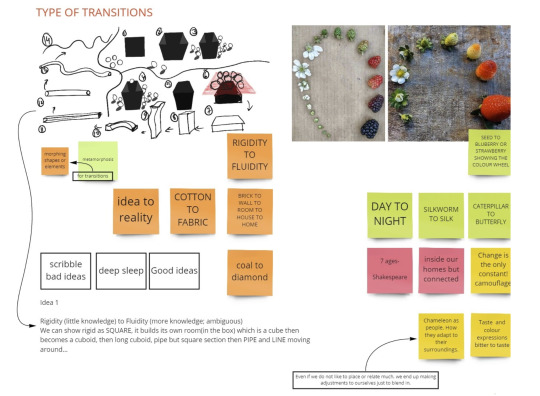
These were some of the initial ideas for the final movie. Few of these ideas were:
1. Cotton to Fabric
2. Fluidity to Rigidity
3. Coal to Diamond
4. Sleep Cycles
5. Day to Night.
6. Silkworm to Silk Yarn
7. Seed to Blueberry or Strawberry
8. 7 Ages by William Shakespeare
and many many more. We were almost on an idea rush that day.
Finally we decided on two ideas:
1. Ship in a storm
2. Breaking the monotony
And we decided to merge these two to make our final video assignment.
You can view our entire ideation here: https://miro.com/app/board/o9J_lf7aDQw=/

A basic methodology was chalked out and we proceeded ahead with our narrations:

Then, we moved on to ways and mediums of creating the movie.

And deciding on the main narrative:
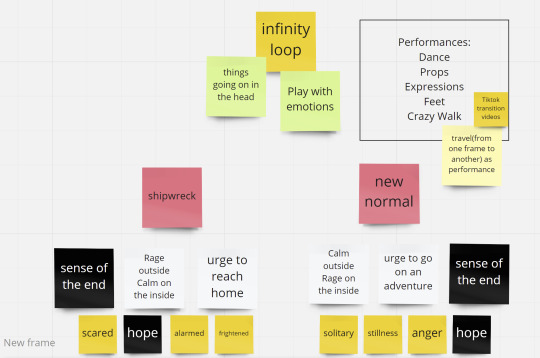
Our brief clearly asked us to use our own space and convert it to create the film.
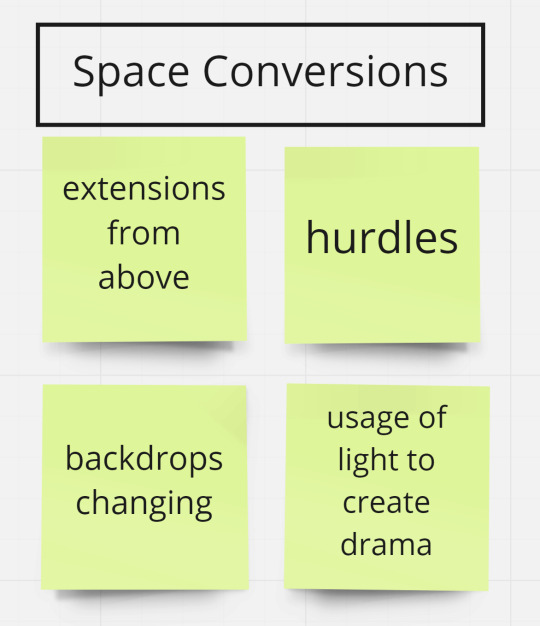

Parallel Narratives for the movie
We started ideating on ways to shoot the sequences and what kind of experimentations can be done.


Now, off to the fun part. The main shoot. Let me show you some visuals and behind the scenes from our movie.

1st Stage. Courtesy: Dikshita

1st Stage. Courtesy: Dikshita

1st stage. Courtesy- Ipsita

1st stage. Courtesy- Ipsita

2nd Stage. Courtesy Ranjana

2nd stage. Courtesy- My curtains

2nd Stage. Courtesy- Krishna Kant

4th Stage. Courtesy- Pujashri

3rd Stage. Courtesy- Shreeya and Anushka
After too many failures in our explorations, we proceeded steadily. We also started creating BG sound clips. We tried everything. From glasses filled with water (Jal Tarang) to echoing voices in bathrooms, rattle sounds of brushes in a tin can and also banging buckets to create beats at 3 am in the morning which finally outraged the street dog community and they barked till morning disturbing everyone’s sleep. Fun fact, we also met at 12 am with our mentors, Chaula and Shubhra in the morning of the day of the premiere just to discuss our progress. Thank you Chaula and Shubhra. You are an inspiration and the very best.
Ok jokes apart. Let me tell you in brief the idea behind the movie.
Two aims, two worlds, two journeys - one common element which binds them together, HOPE. This is a journey through the experiences of storm outside and the storm which forms in your mind. Being stuck at one place, we go into a routine without even realising it and that gets to us eventually. We feel the need to break free. In another world, chaos is the rule of the land and peace is a myth. Here someone realises the presence of a peace and serene world.
Now, enough with the talking. Let me show you what we have come up with. I hope you enjoy as much as we did while making this.
Disclaimer: Nothing was harmed during the filming of this movie, except perhaps sleep cycles.
youtube
Ok, so how did you like this movie?
Next day, we had a session from 11 am which was best to say an entire film festival in itself. We watched a total of 12 shortfilms together. Each one with a different but gripping narration. It was a journey, more like a multi course meal at a posh 5 star with 116 members, including faculties and students.
Ok, now I need a break. These 6 weeks were very insightful and another booster to this journey called National Institute of Design and I am very exhausted as well. Anyway, Diwali is here.
Can we talk next week? Thanks a lot for understanding.
Alvida, Adios, Tata, Bye Bye, Hasta la Vista and Sayonara till next time.
0 notes
Text
The exhibition ‘Broken Foot’ documented the migrant workers’ crisis amid a network of inequalities
New Post has been published on https://jordarnews.in/the-exhibition-broken-foot-documented-the-migrant-workers-crisis-amid-a-network-of-inequalities/
The exhibition ‘Broken Foot’ documented the migrant workers’ crisis amid a network of inequalities

The online exhibition, which concluded on October 10, created a unifying architecture with the Constitution as its keystone to address manifold inequalities
Inked into a confined space, the inmates are restless. One seems to be on the verge of trying to pace about; another, sharp-featured and masked, sits cross-legged and glares at the artist. Others loom in the background — are those shadows on the wall or men crumbling into bones, with cracked skulls and skull-textured masks? And yet, all these are distinct figures still, human beings full of individuality and nervous energy. This is no longer the case when we pass on to the second half of Umesh Singh’s remarkable diptych, Escapade — a Journey with the Migrants. By this time they’ve dissolved into an undifferentiated mass of huddled humanity. The walls have narrowed, and shadows lean against them with an air of desperation.
Singh, who endured an arduous two months of isolation in Varanasi during the lockdown, and was then stuffed into a series of crowded buses to return to Bihar, decided to document the experiences of his fellow travellers, a group of migrant labourers and poor students, through his art. “The bus had only 30 seats, but there were 50 people. There would be two-three people under one blanket,” he recalls. The claustrophobia and eventual dehumanisation — dehumanisation in the eyes of, and by, an indifferent state — in stark black ink evoke thoughts of the infamous Black Hole incident of Calcutta or Chittaprosad’s depictions of the Bengal Famine.

Umesh Singh’s ‘Escapade — a Journey with the Migrants’ | Photo Credit: Special arrangment
Interrelated contours
‘Spontaneous solidarities’, as epitomised in Singh’s works, was one of the thematic clusters of the exhibition ‘Broken Foot — Unfolding Inequalities,’ which ran online for three months before concluding on October 10. Driven by a need to respond to the unfolding migrant labour crisis, when an estimated one crore people tried to reach home on foot between March and June, curators Prabhakar Kamble and Rumi Samadhan reached out to 60 artists and built a thematic framework with labour at its heart. The works went up for sale on the Mojarto platform with proceeds going to artists in need.
The curatorial vision was developed along a number of interrelated contours, including the Constitution, with its idea of ‘we, the people’ and the various promises of equality; the contributions of B.R. Ambedkar to the labour movement; labour and urbanisation; migration; forms of labour; the plight of farmers; the relation between land, people and ecological issues, which ties in with tribal people and their traditions; and the notion of education as emancipation.

Don’t see
The eponymous work, Broken Foot, a sculpture in wood by curator Kamble, can be compared with Balaji Ponna’s painting, Walking Under the Empty Sky, in which a cracked slipper bestrides the outline of India as innumerable souls with glowing eyes stare accusingly. Both point to the rupture caused by the great migration, a tear in the social fabric born of blindness and betrayal. One of the exhibition’s major themes was the relationship between labour and the nation, and as we too often forget, a nation is nothing but an abstraction of a people. It is the nation that has been ruptured.
Photojournalist T. Narayan captured these lockdown journeys in his own way. One striking image, taken from behind, shows a child almost fused to his father’s neck and shoulders, as if they are one entity. Venkat Shyam’s painting, The Journey, similarly depicts a mother, looking almost like an Egyptian goddess with a pot for a crown, taking her son by the hand and walking barefoot, even as a train and an aeroplane cruise past. It’s hard not to think of the very different treatments the government meted out to returning NRIs and home-bound labourers.

An Ambedkarite gaze on society is prominent in many of the works, and perhaps its baldest expression is in Vikrant Bhise’s painting, Ambedkar and a Labourer. A worker cleaning a statue of Ambedkar covers the latter’s eyes — perhaps urging him not to gaze, shielding him from egregious reality. Arun Vijai Mathavan’s photographs of Dalit sanitation workers and mortuary technicians during the lockdown, and the extreme conditions and prejudice they face — heightened at a time of enforced social isolation — are also striking.
Uncanny timing
Gopal Gangawane’s painting Thinker is indeed Rodin’s Thinker, but sitting on a glass-cube pedestal, he towers above three emaciated children gazing longingly at a roti hanging inside the cube. Does his philosophical, perhaps sympathetic, gaze help them in any way? Will they ever be able to think abstractly if all they can afford to think about is their next meal? Another familiar image — the pietà, Mary cradling the body of Christ — is repurposed in the ink painting, Mothers Arms are More Comfortable, by Khandakar Ohida. A body with red flesh, blood and burns, held in a woman’s arms reminds us of the quotidian violence faced by the subaltern.

Khandakar Ohida’s ‘Mothers Arms are More Comfortable’ | Photo Credit: Special arrangement
Intersectionality was at play everywhere, as the exhibition looked at inequalities in different dimensions. Siddhi Jadhav’s photographs offered a peek into the life of a hijra, while Tejaswini Sonawane’s etching, Arriving Home, depicted, grotesquely, the contradictions between modernity and tradition as a grimacing woman-owl, striving to take flight, remains grounded under the gaze of society’s beady eyes.
Such thematic expansiveness meant that Broken Foot wasn’t purely focused on the plight of migrant labourers, but created an unifying architecture that took the Constitution as its keystone. Its invocation of fundamental rights and the now-totemic preamble took one back to the anti-CAA protests while the work of artists like Randeep Maddoke and Kuldip Karegaonkar depicting the lives and deaths of farmers was uncannily timely. The documentary value of recording through art the tragedy of migrant workers during the lockdown, one of the greatest yet most muted crises in our recent history, is this project’s most important achievement.
Source link
0 notes
Text
The Versatility Of Kuri Kambali Or Kambli Blankets

Kambali or Kambli Blankets are not only beautiful and soft but also incredibly versatile. They can be used in a variety of settings and for a wide range of purposes, from outdoor adventures to indoor relaxation. Here are some of the many ways that Kambali blankets can be enjoyed:
Camping and outdoor adventures: Kambali blankets are perfect for camping and other outdoor activities. Their natural fibers are breathable and moisture-wicking, which means that they can keep you warm without overheating. Due to pure wool, they are lightweight and easy to pack, making them a great choice for backpacking trips. Whether you use them as a cozy layer for sleeping or as a picnic blanket for lunch, Kambali blankets are an essential item for any outdoor adventurer.
Beach trips and picnics: Kambali blankets are also great for beach trips and picnics. Their soft texture and Natural colors make them a stylish and comfortable choice for lounging on the sand or in the grass. They are also easy to clean, so you don’t have to worry about getting them dirty. Whether you use them as a beach towel, a picnic blanket, or a cover-up, Kambali blankets are perfect for any outdoor outing.
Home décor: Kambali blankets are not just functional, but also beautiful. They come in a variety of colors and patterns that can add a touch of warmth and style to any room. They can be draped over a couch or chair as a decorative accent, or used as a throw to snuggle up with on chilly nights. They can also be used as a wall hanging or as a tablecloth for a bohemian touch.
Yoga and meditation: Kuri Kambali is known as Jivant Aasana and it has its importance during meditation. Kambali blankets are perfect for yoga and meditation practices. Their soft texture and natural fibers make them comfortable to sit or lie on during your practice. They can also be used as a cover-up during meditation or as a prop for certain yoga poses. Kambali blankets are low maintenance and can be easily cleaned, allowing you to enjoy them repeatedly without any hassle…
Baby blankets: Mare Unne Kambali blankets are gentle and soft, making them perfect for babies. Their natural fibers are hypoallergenic and breathable, which means that they won’t irritate sensitive skin. They can be used as a swaddle or as a cozy layer for napping.
Travel accessory: Kambali blankets are not only great for camping and outdoor adventures, but also for travel in general. Their lightweight and compact design makes them easy to pack in a carry-on bag or a backpack. They can be used as a blanket on a plane, a cover-up on a chilly evening, or a pillow during a long layover.
Gift-giving and Donation: Kambali blankets make great gifts for any occasion. Their vibrant colors and unique patterns make them thoughtful and personal presents for a loved one. They can be given as a housewarming gift, a baby shower present, or a birthday surprise. They are also a great way to support sustainable and ethical production practices. It’s the best option for donation purposes during the winter season. Its natural fibers don’t allow it to accumulate dust on its surface so it can be used widely for donation purposes.
In conclusion, Kuri Kambali/ Kambali blankets/Rugs are versatile and functional items that can be used in a variety of settings and for a wide range of purposes. Whether you are camping in the wilderness, snuggling up on the couch, or practicing yoga, Kambali blankets are the perfect accessory. With their soft texture, natural fibers, and beautiful colors and patterns, they are a must-have item for anyone who appreciates comfort and style.
1 note
·
View note
Photo

Online Exhibition Series-19 22nd October, 2020 वेबसाइट की लिंक / Website link - https://igrms.com/wordpress/?page_id=1347 फेसबुक लिंक / Facebook Link - https://www.facebook.com/NationalMuseumMankind यूट्यूब की लिंक / Youtube link - https://youtu.be/3yb84f_J6kU From Open Air Exhibition Mythological Trail: The Myth of Jeteer Mythological Trail Mythological Trail exhibition portrays the inner essence of the tribal and folk life and their worldviews through indigenous art forms. On the theme of tribal and folk myths, so far this is the only exhibition of its kind in the country. It is believed that a basic understanding of myths is expedient to the desire of knowing a culture. Somehow the myths are deeply intertwined with life and culture of the tribal and folk communities. Ancestral worship is prevalent among most of the communities throughout India. They are worshipped for the well-being and protection from evil influences. One such story of ancestor and the associated myth which is prevalent in Sindhudurg of Maharashtra is “The myth of jeteer”. The myth of Jeteer is painted in the Chitrakathi style tells about the eventual worshiping of the ancestors as god. When Jeteer was very small, his sister was married and sent off to a distant village. Soon after, his parents left this world, and he was brought up by a kind shepherd. Though the shepherd did not live long, by the time Jeteer was grown up enough to take the shepherd’s son and set out in search of his sister. In a village called Narul, they stopped at a house for the night. They asked the woman of the house to cook for dinner the rice they were carrying.When the woman sat down to eat, tears started rolling down her eyes. And she said to herself, the rice smells the lake water in my village, the brother recognized her long lost sister and pleaded her to accompany him home for a few days. The brother in law however got furious with the stranger’s behaviour and cut off his head. The shocked shepherd ran towards his village Tudas with the severed head in this hands. On his way the places where his blanket and stick fell came to be called Kamble veer and DandyacheGadwo respectively. https://www.instagram.com/p/CGoh71lFJka/?igshid=gx8334unzj63
0 notes